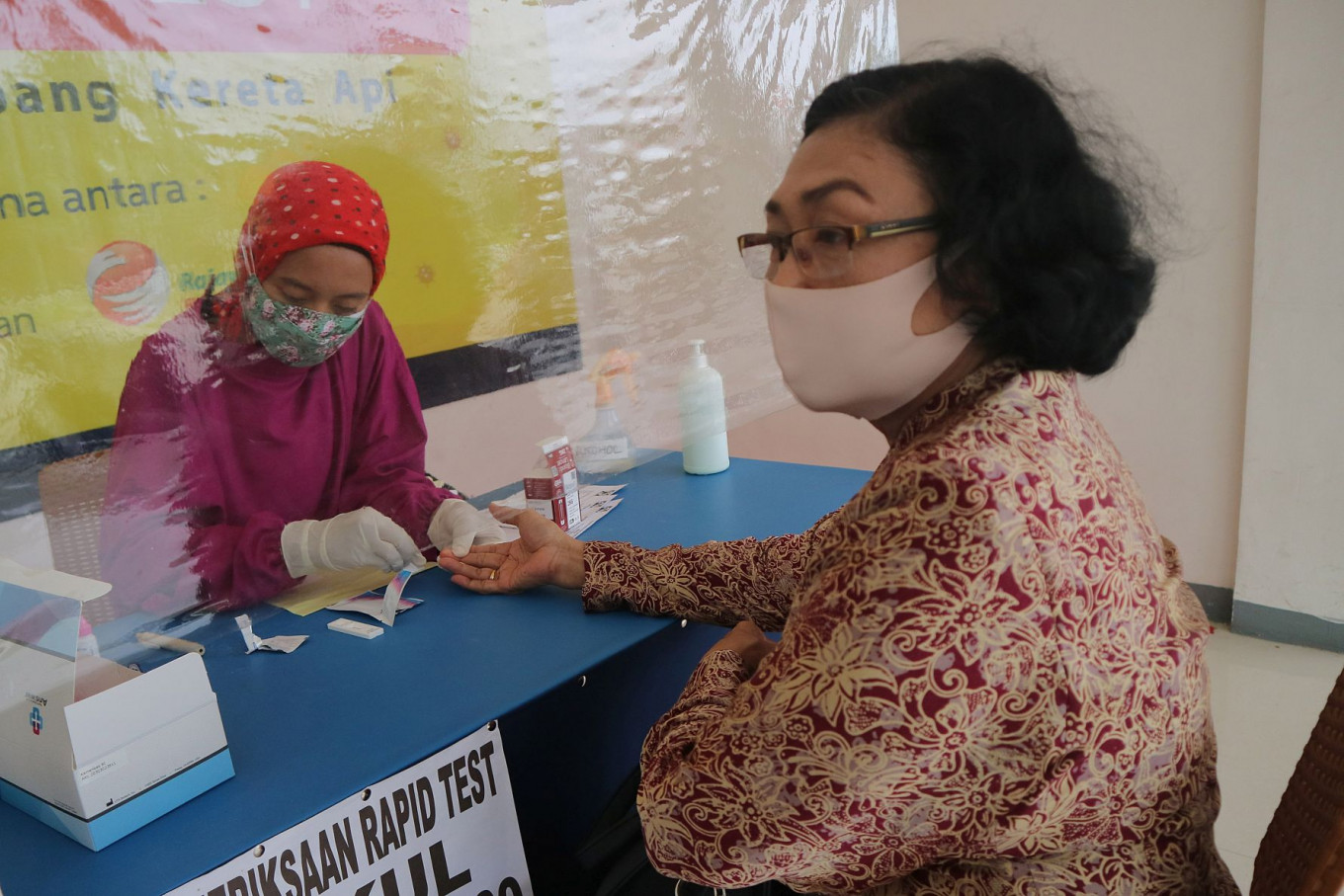Popular Reads
Top Results
Can't find what you're looking for?
View all search resultsPopular Reads
Top Results
Can't find what you're looking for?
View all search resultsRegions classed as ‘orange zones’ need to evaluate their COVID-19 handling: Task force
“We find that [those regions] are being too complacent, likely because they are not red zones [high infection risk], but maintain orange zone status for quite a long time. We at the task force take a dim view of this,” Wiku said in a statement on Thursday.
Change text size
Gift Premium Articles
to Anyone
N
ational COVID-19 task force spokesman Wiku Adisasmita has deplored the fact that 54 regions have continued to be categorized as “orange zones” for 10 weeks now.
Orange zones, in the government’s risk mapping system, are regions where there is a medium risk of COVID-19 infection.
“We find that [those regions] are being too complacent, likely because they are not red zones [high infection risk], but maintain orange zone status for quite a long time. We at the task force take a dim view of this,” Wiku said in a statement on Thursday.
According to him, Indonesia had seen an alarming twofold increase in the number of orange zones as of late October. In the early days of risk zoning back in May, 166 regencies and cities were orange zones, but as of Oct. 25, the country listed as many as 360 regencies and cities.
“Our common target is to have all regencies and cities be classed as yellow or green zones. One cannot be too complacent about being categorized as an orange zone,” he added, referring to areas with low risk of infection for yellow zones and lowest risk of infection for green zones.
Read also: Even with zero cases, Indonesia's remote regions feel the weight of COVID-19
The 54 regions are spread across Aceh, North Sumatra, South Sumatra, West Sumatra, Riau Islands, West Java, Central Java, East Java, Banten, Yogyakarta, West Nusa Tenggara, North Kalimantan, East Kalimantan, Central Kalimantan, South Kalimantan, North Sulawesi, Southeast Sulawesi, North Maluku and Papua.
Wiku urged the said regencies and cities to thoroughly evaluate their COVID-19 handling and immediately increase their efforts to control the infection.
“Ten weeks is not a short time. Therefore, we urge regents and mayors of each region, supported by their respective governors, to quickly fix their situation. We are waiting for the 54 regions to be classified as yellow zones,” he added.
Indonesia currently has 20 regencies and cities considered at high risk of infection, 360 at medium risk, 115 at low risk, seven at lowest risk and 12 without infection.
As of Sunday, Indonesia had recorded a cumulative 412,784 confirmed COVID-19 cases with 341,942 recoveries and 13,943 deaths.
Jakarta led the tally with a total of 106,205 confirmed cases, followed by East Java with 52,718 cases, West Java 36,583 cases, Central Java with 34,370 cases and South Sulawesi with 18,370 cases. (nkn)
Editor’s note: This article is part of a public campaign by the COVID-19 task force to raise people’s awareness about the pandemic.










